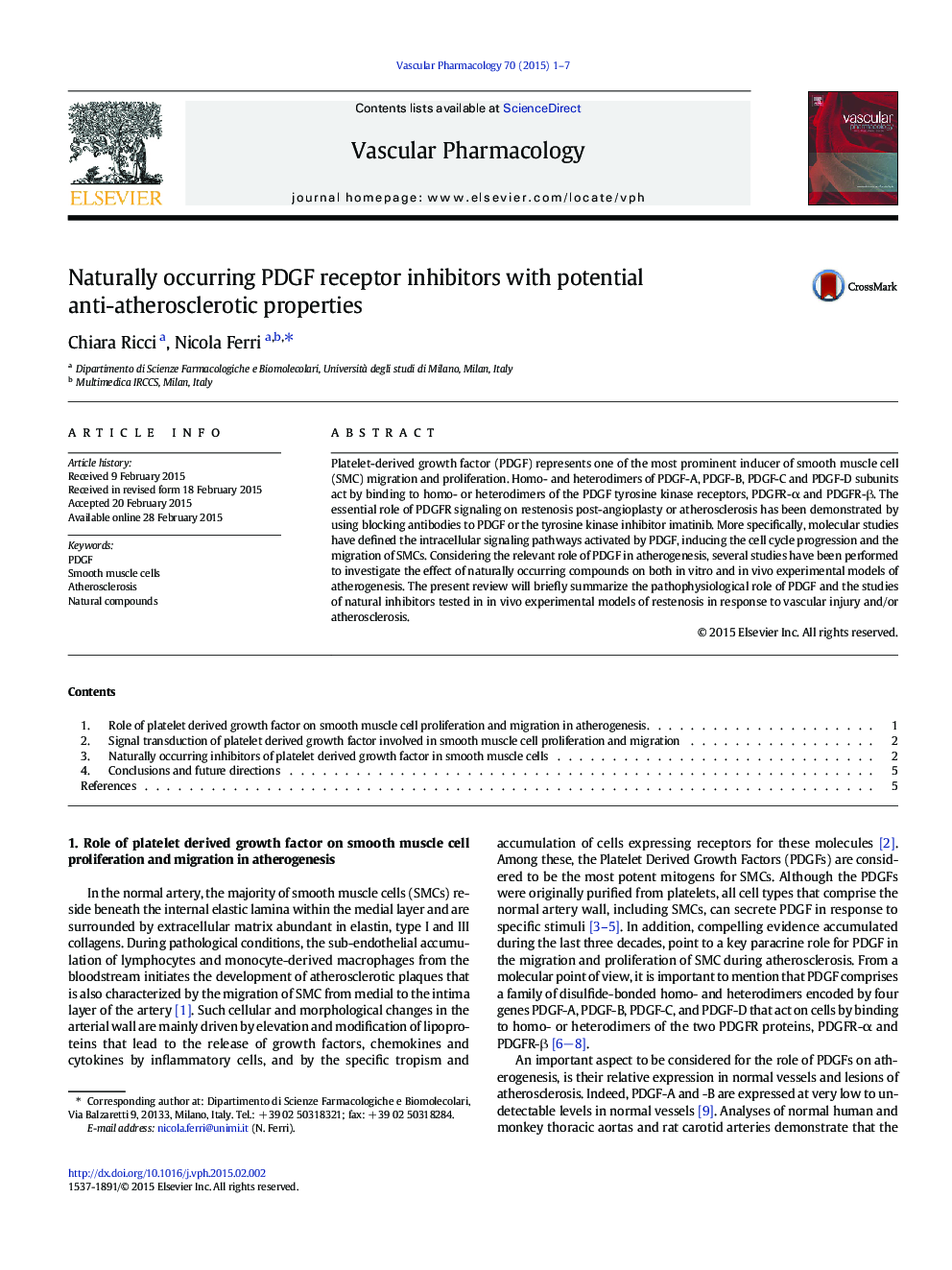| Article ID | Journal | Published Year | Pages | File Type |
|---|---|---|---|---|
| 2574097 | Vascular Pharmacology | 2015 | 7 Pages |
Platelet-derived growth factor (PDGF) represents one of the most prominent inducer of smooth muscle cell (SMC) migration and proliferation. Homo- and heterodimers of PDGF-A, PDGF-B, PDGF-C and PDGF-D subunits act by binding to homo- or heterodimers of the PDGF tyrosine kinase receptors, PDGFR-α and PDGFR-β. The essential role of PDGFR signaling on restenosis post-angioplasty or atherosclerosis has been demonstrated by using blocking antibodies to PDGF or the tyrosine kinase inhibitor imatinib. More specifically, molecular studies have defined the intracellular signaling pathways activated by PDGF, inducing the cell cycle progression and the migration of SMCs. Considering the relevant role of PDGF in atherogenesis, several studies have been performed to investigate the effect of naturally occurring compounds on both in vitro and in vivo experimental models of atherogenesis. The present review will briefly summarize the pathophysiological role of PDGF and the studies of natural inhibitors tested in in vivo experimental models of restenosis in response to vascular injury and/or atherosclerosis.
Graphical abstractFigure optionsDownload full-size imageDownload high-quality image (129 K)Download as PowerPoint slide
